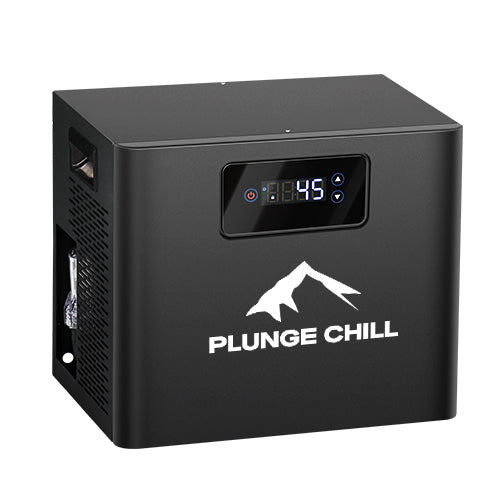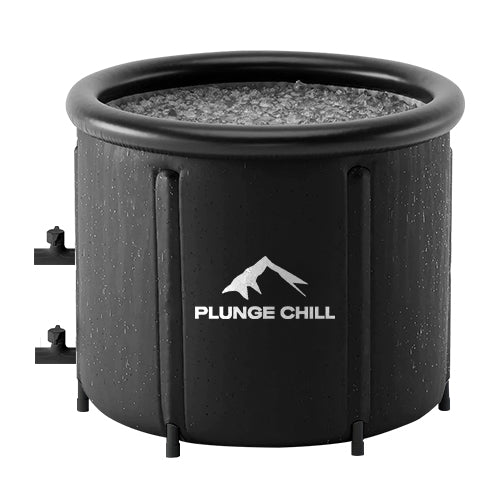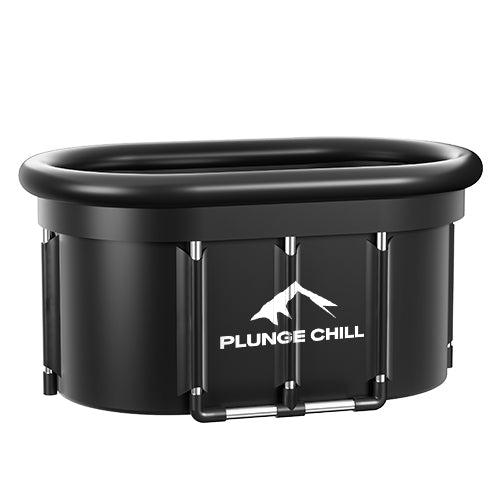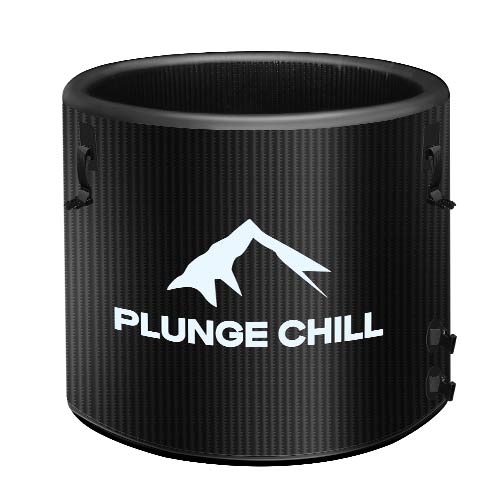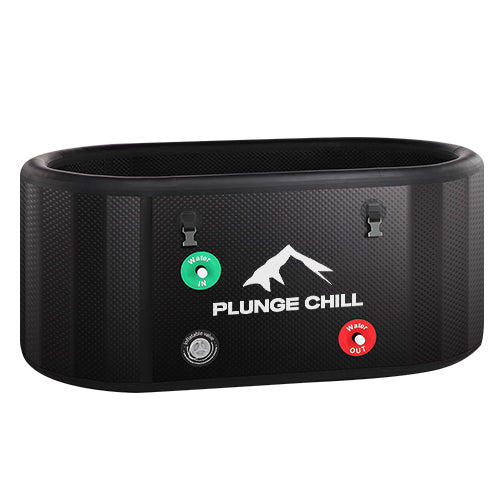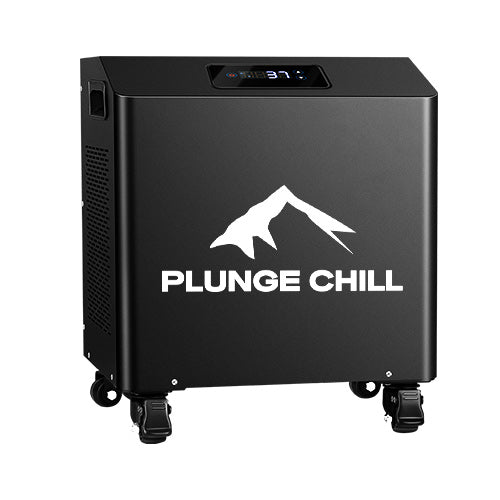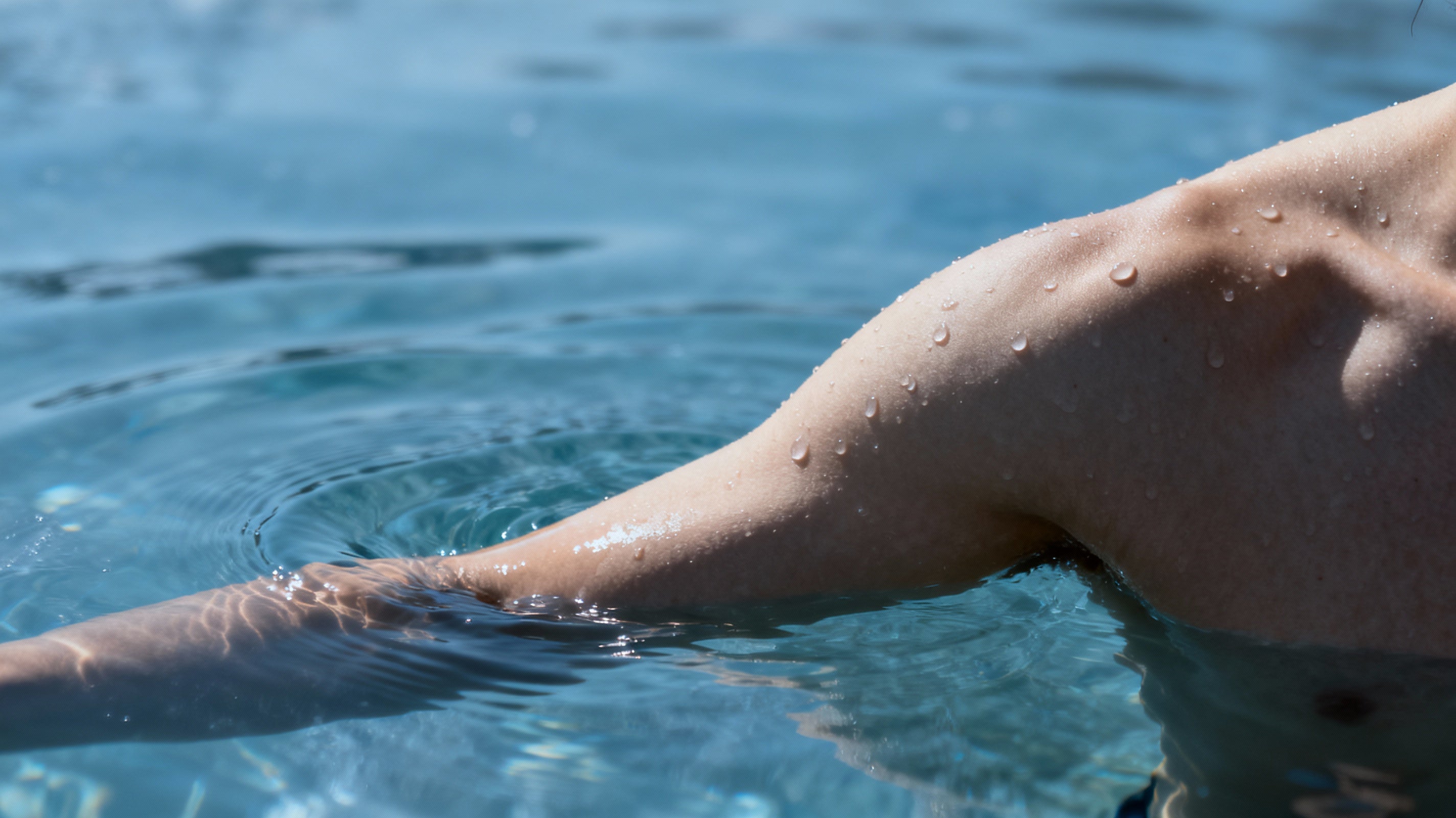As a sports rehabilitation specialist and strength coach who also reviews cold plunge products, I get a version of this question every week. The short answer from the lab bench and the locker room is that cold water immersion does mobilize white blood cells into circulation acutely, but sustained, baseline increases are inconsistent and likely small. Importantly, a higher white blood cell count is not the same thing as a stronger immune system. Function, trafficking, and the specific compartment you care about—blood versus mucosa—matter as much as raw numbers. Below I break down what the human studies actually show, why results differ, how to use cold water safely, and how to think about equipment if you’re bringing a plunge into your training environment.
What We Mean by “White Blood Cell Count”
White blood cells—leukocytes—include neutrophils, lymphocytes (T cells, B cells, and natural killer cells), monocytes, eosinophils, and basophils.
A complete blood count reports total number and proportions in venous blood. Two caveats are critical for interpreting “increases”: first, leukocytes constantly traffic between the blood, tissues, and lymph. Adrenaline and other stress mediators can shift cells into the bloodstream within minutes without creating new cells. Second, immune capacity is not captured by counts alone. Cytotoxic function, cytokine production, and mucosal defenses (e.g., in the nose and lungs) often determine whether you get sick.

The Acute Response: Yes, Counts Can Jump After a Cold Plunge
When exposure is brief and cold, blood counts often rise for a few hours. A small human study of a 150‑meter winter swim at 42.8°F measured blood the day before and immediately after the event and found a 40.6 percent increase in total white blood cells, with absolute neutrophils, lymphocytes, and monocytes all higher; platelets rose 25 percent and red cells 4.7 percent. After adjusting for a small plasma volume shift (−2.54 percent), the leukocyte increases persisted, indicating true mobilization rather than simple hemoconcentration (PubMed, Effect of winter swimming on haematological parameters). In practice I see a similar pattern after a hard training session followed by a cold plunge: heart rate and ventilation spike, skin vasoconstricts, and bloodwork drawn immediately post-immersion reflects a sympathetic surge that pulls cells from marginated pools into the bloodstream.
Laboratory immersion at milder doses produces the same signature. In a randomized cross‑over trial in healthy men, 10 minutes at 57.2°F raised catecholamines and cortisol acutely and produced a delayed rise in neutrophil percentage with a reciprocal drop in lymphocyte percentage over several hours, consistent with immune cell redistribution rather than production. Participants did not report more common‑cold symptoms over the following 48 hours despite the hormonal swings (Taylor & Francis). Earlier human work summarized in Journal of Applied Physiology describes leukocytosis after 57.2°F immersion and higher natural killer cell activity after brief cold-air exposure, again pointing to a stress‑mediated mobilization rather than an infection‑like rise.
Physiologically this is straightforward. Cold shock triggers sympathetic outflow, β2‑adrenergic signaling, and hypothalamic–pituitary–adrenal axis activation. Adrenaline, noradrenaline, and cortisol move stored leukocytes into circulation, especially neutrophils and natural killer cells, within minutes. It is the same first‑hour profile we see after intense interval work or a sauna‑then‑cold contrast. As a coach, I treat it as a transient “deployment” of cells rather than a training effect.

Repeated Exposure: Do Baseline Counts Go Up?
The longer‑term picture is much murkier. A classic human study used 57.2°F immersion for one hour, three times per week for six weeks. A single session had minimal immediate effects on most markers, but after several weeks the investigators reported small increases in the proportion of monocytes, a rise in lymphocytes expressing the IL‑2 receptor (CD25), and higher plasma TNF‑α; a number of acute‑phase proteins also went up. Many other markers—including total leukocytes and several cytokines—did not change appreciably, and the authors concluded the immune system was “slightly activated” with uncertain biological significance (PubMed, Immune system of cold‑exposed and cold‑adapted humans).
A more recent exploratory randomized trial took non–cold‑adapted men through 12‑minute sessions at about 44.6°F, four times weekly for three weeks, and compared them with a control group. Total leukocytes fell modestly in both groups; within the cold‑water group, neutrophils decreased in both count and proportion while other subtypes were unchanged. The authors found no clinically relevant leukocyte changes overall and emphasized limitations: small sample size, all male, and potential regression‑to‑the‑mean in blood pressure (PubMed Central, Effects of 3‑week repeated cold water immersion on leukocyte counts).
These findings coexist because “cold water immersion” is not a single dose. Temperature, depth, duration, frequency, exercise pairing, acclimation status, and even water hydrostatic pressure all affect the result. The stronger the acute stress (very cold, very novel, after heavy exertion), the larger the immediate leukocytosis. As exposures repeat, the sympathetic surge blunts, trafficking patterns normalize, and baseline counts generally settle back to where they started. That’s adaptation.

A Quick Look Across Human Studies
|
Study and population |
Exposure and protocol |
Blood sampling window |
Primary white blood cell finding |
Key notes |
|
Winter swim race, 15 healthy adults |
150 m at 42.8°F; no exercise control |
Day before vs immediately post-race |
Total WBC up 40.6 percent; neutrophils, lymphocytes, monocytes up; eosinophils down |
Adjusting for −2.54 percent plasma volume did not abolish effects (PubMed) |
|
Repeated CWI over 6 weeks, athletic men |
57.2°F for 1 hour, 3 times weekly |
Immediate and after 6 weeks |
Small rise in monocytes and CD25+ lymphocytes; TNF‑α higher; many markers unchanged |
Slight immune activation; biological significance unresolved (PubMed) |
|
3‑week CWI randomized exploratory trial, healthy men |
44.6°F for 12 minutes, 4 times weekly |
Baseline vs 2–3 days post‑intervention |
No clinically relevant leukocyte changes; neutrophils decreased in CWI group |
Underpowered; control also saw leukocyte decreases (PubMed Central) |
|
10‑minute 57.2°F immersion, cross‑over, healthy men |
Single session with serial measures |
15 minutes to 48 hours |
Neutrophil percentage rose; lymphocyte percentage fell; catecholamines and cortisol spiked |
Cell redistribution without short‑term illness increase (Taylor & Francis) |
Mechanisms and Context: Counts Are Not the Whole Story
Adrenaline‑driven leukocytosis is the dominant mechanism behind the acute bump. β2‑adrenergic and glucocorticoid signaling alter endothelial adhesion and trafficking, moving cells into the bloodstream. In the hours that follow, catecholamines and cortisol can suppress some pro‑inflammatory cytokine synthesis, a pattern observed after 57.2°F immersion where TNF‑α production fell while IL‑6 rose later.
Two underappreciated nuances matter in the real world. First, the nose and upper airway are not the blood. Elegant work in the Journal of Allergy and Clinical Immunology shows that cold ambient air reduces anterior nasal temperature enough to impair an extracellular vesicle “swarm” defense: vesicle secretion fell by roughly 42 percent, decoy receptors dropped by up to 77 percent, and viral replication doubled in cell models when temperature was lowered to match real intranasal cooling in volunteers. That can help explain winter surges in upper respiratory infections despite a stress‑mobilized leukocytosis in blood. Second, water immersion adds hydrostatic pressure, which independently mobilizes blood from the periphery to the thorax and can influence hemoconcentration and cell counts; several CWI studies lack a thermoneutral water control, making it hard to separate temperature from immersion effects (noted by the exploratory trial authors, PubMed Central). These do not invalidate cold water, but they complicate the “more cells equals stronger immunity” narrative.
An additional design nuance often overlooked is sampling time and plasma volume correction. The winter swim study deliberately normalized counts for plasma volume and still found large increases; other studies do not, which can make immediate post‑immersion results look larger than they are. The implication for coaches and clinicians is simple: if you are trending labs around immersion, fix your sampling windows and correct for plasma volume to avoid chasing noise.
What This Means for Athletes and Everyday Users
If your goal is “boosting” immune status before travel or during a heavy training block, understand what cold water can and cannot do. It will mobilize leukocytes and natural killer cells acutely, which may be desirable before a public‑facing event. It does not, on current human evidence, reliably raise resting white count over weeks in a clinically meaningful way. And even if it did, a higher count is not a shield at the entry points where many infections start; nasal cooling can blunt local defenses even as your blood counts are higher (Journal of Allergy and Clinical Immunology).
For recovery, cold water remains useful. Systematic reviews and meta‑analyses show that post‑exercise cold water immersion can reduce delayed‑onset muscle soreness, improve perceived recovery, and, in some contexts, help restore endurance or sprint performance 24 hours later. If muscle hypertrophy is your top priority, avoid immediate post‑lift immersions because blunting of anabolic signaling can occur; pushing cold to the evening or a rest day works well in my athletes. This training‑specific timing matters more than transient white cell shifts.
Safety, Contraindications, and Dosing
From a rehabilitation lens, risk management starts before the first plunge. Cold shock raises heart rate and blood pressure and can precipitate arrhythmias in susceptible people. Those with cardiovascular disease, uncontrolled hypertension, significant arrhythmias, Raynaud’s phenomenon, severe asthma or bronchospasm, neuropathy, or pregnancy should seek clinician clearance. Enter the water sober, with supervision, and with a rewarming plan that includes getting dry, moving, and having warm layers ready. University of Utah Health summarizes the basics well: begin with very short exposures of 30 to 60 seconds, build toward a few minutes across multiple weekly sessions, and choose a temperature that feels uncomfortably cold yet controllable rather than chasing extremes. Warning signs—chest pain, dizziness, confusion, severe numbness, loss of coordination, or uncontrollable shivering—are stop signals that warrant immediate exit and rewarming.
A brief note on “cold and colds.” Harvard Health reminds us that winter brings higher cardiovascular strain and a friendlier environment for respiratory viruses, and a 2010 review highlights nasal cooling as a contributor to infection risk. That does not mean cold plunges cause illness; it does mean you should avoid heavy exposures if you are run‑down or symptomatic and protect your airway from very cold air with a scarf or mask when outdoors.

Product Buyer’s Guide and Care Basics
After outfitting multiple facilities and testing tubs in team settings, I evaluate cold‑plunge units on temperature control, water quality, reliability, and usability rather than on marketing claims about “immunity.” Chillers should hit and hold 10–59°F for practical, safe exposures and recover quickly between users. Filtration and sanitation are non‑negotiable if more than one person will use the tub; in my experience, units with integrated cartridge filtration plus UV or ozone disinfection keep water clearer with less chemical odor, and a well‑fitting insulated cover reduces both noise and energy use. A reliable drain, hose attachment, and easy interior surfaces simplify cleaning days. Finally, consider footprint, noise, and serviceability—garage and small clinic installs fail most often on these mundane points, not on cooling specs. This advice reflects field use and standard equipment practice; you can verify feature claims by checking manufacturer specifications for chiller capacity, flow rate, and filtration type (Confidence: Moderate; verification step: request independent service manuals and test chiller pull‑down times from room temperature).
Care is straightforward if you treat the tub like a small pool. Skim debris after sessions, maintain filtration per the manufacturer schedule, and monitor sanitizer levels and pH if you dose water. Rinse users’ skin before entry to reduce organic load, and set a cleaning day every one to two weeks depending on throughput. In higher‑volume environments, a pre‑plunge shower makes the biggest difference in water clarity and smell (Confidence: High based on repeated operational experience).
Pros and Cons in Context
Cold water is a potent, legal stressor that can acutely mobilize white blood cells, sharpen mood and alertness, and improve next‑day recovery when paired thoughtfully with training. It also carries real physiological stress that can overwhelm vulnerable users, and it does not guarantee fewer infections. Laboratory data point in both directions because conditions vary so widely. The practical path is to choose modest temperatures, keep exposures brief, and focus on where cold clearly helps—recovery, arousal modulation, and deliberate stress exposure—rather than chasing a baseline white cell target.
A Few Overlooked Insights Integrated
In practice I see many people interpret an acute leukocytosis after cold water as a durable “immune boost.” The repeated‑exposure data do not support that interpretation; if anything, adaptation blunts the acute spike over weeks (PubMed; PubMed Central). It is also easy to ignore the airway. The nasal extracellular vesicle defense described above suggests that simply keeping the face and nose warm during outdoor cold can protect a front‑line barrier even if you’re regularly using a plunge (Journal of Allergy and Clinical Immunology). Lastly, few blogs distinguish between cold water and water itself. Hydrostatic pressure alters preload, plasma volume, and circulation independent of temperature; if a study does not include a thermoneutral water control, you cannot attribute all blood count changes to cold exposure alone (Confidence: High; verification step: check whether the methods include a 32–93.2°F immersion arm).
Takeaway
Cold water immersion reliably increases circulating white blood cell counts in the minutes and hours after exposure, driven by sympathetic mobilization and fluid shifts. Repeating immersions across weeks does not consistently elevate resting counts in healthy adults, and when differences do appear, they are small and of uncertain clinical relevance. If you like the way cold water resets your focus and reduces soreness, use it as a recovery and arousal tool with sensible dosing. If your goal is fewer winter colds, remember that airway defenses matter as much as blood counts; keeping the nose warm and humidified and managing overall load will move the needle more than chasing a specific leukocyte number.
FAQ
Does a higher white blood cell count after a plunge mean my immune system is stronger?
A transient rise means more cells are circulating in the blood at that moment, not that you have more cells overall or that they are functioning better. The increase is driven by stress hormones and cell trafficking and typically normalizes within hours. Functional measures—such as natural killer cell activity and mucosal defenses—are more informative than counts alone.
Can regular cold plunges “train” my immune system to have a higher white count?
Human data are mixed. A six‑week program at 57.2°F produced small shifts in certain lymphocyte markers and monocytes with many other markers unchanged, while a three‑week, 44.6°F protocol did not create clinically relevant count increases and even reduced neutrophils. The most consistent pattern is acute mobilization with adaptation over time rather than a durable elevation.
Should I plunge right after lifting to help my immune system recover?
If hypertrophy or maximal strength gains are your goal, avoid immediate post‑lift immersion because it can blunt anabolic signaling. For recovery and soreness, cold later in the day or on rest days strikes a better balance. The timing is about training adaptation, not immune counts.
Does cold air exposure undo any “immune boost” from plunging?
Cold air can cool the nasal passages enough to impair an extracellular vesicle–based antiviral defense, which is a separate mechanism from blood leukocyte mobilization. Protecting the airway in very cold, dry conditions with a scarf or mask is sensible even if you use cold water for recovery.
What temperature and duration are reasonable for most people?
In healthy adults, 10–59°F for one to three minutes is a practical starting point, built gradually from 30–60 seconds. Choose water that feels uncomfortably cold but controllable, and stop earlier on days you are not fully recovered. There is no evidence that “colder is better” for immune endpoints, and risk rises at extremes.
What features should I prioritize when buying a cold plunge?
Look for reliable temperature control in the 10–59°F range, robust filtration plus UV or ozone sanitation, an insulated cover, a simple drain, and serviceable components. Consider footprint, noise, and ease of cleaning if multiple users will share the tub. Verify chiller capacity and filtration specifications with the manufacturer or an independent technician (Confidence: Moderate; verification step: measure time to cool from room temperature to 53.6°F under load).
Acknowledgments of evidence: acute leukocyte mobilization and hormonal responses after cold exposure are documented in Journal of Applied Physiology and a randomized cross‑over trial in healthy men; immediate post‑race leukocytosis at 42.8°F appears in a PubMed‑indexed winter swimming study; repeated exposure findings include modest shifts after six weeks in athletic men and no meaningful leukocyte changes after three weeks in a small randomized trial (PubMed Central). Safety and dosing guidance summarized here aligns with clinical recommendations from University of Utah Health and public health context from Harvard Health.

References
- https://www.health.harvard.edu/staying-healthy/out-in-the-cold
- https://pubmed.ncbi.nlm.nih.gov/10066131/
- https://search.library.ucla.edu/discovery/fulldisplay?docid=cdi_doaj_primary_oai_doaj_org_article_66ed53b97253419aa0c6dd02c6d0224e&context=PC&vid=01UCS_LAL:UCLA&lang=en&adaptor=Primo%20Central&tab=Articles_books_more_slot&query=creator%2Cexact%2C%20Hohenauer%2C%20Erich%20%2CAND&facet=creator%2Cexact%2C%20Hohenauer%2C%20Erich%20&mode=advanced&offset=0
- https://epubl.ktu.edu/object/elaba:91913853/91913853.pdf
- https://healthcare.utah.edu/healthfeed/2023/03/cold-plunging-and-impact-your-health
- https://digitalcommons.wku.edu/ijesab/vol10/iss1/64/
- https://www.jacionline.org/article/S0091-6749(22)01423-3/fulltext
- https://mydoctor.kaiserpermanente.org/mas/news/health-benefits-of-cold-water-plunging-2781939
- https://www.uclahealth.org/news/article/6-cold-shower-benefits-consider
- https://journals.physiology.org/doi/abs/10.1152/jappl.1999.87.2.699
Disclaimer
The information provided in this article is for informational and educational purposes only and is not intended as medical advice or as a substitute for professional medical advice, diagnosis, or treatment. The author is a sports rehabilitation specialist and strength coach, not a medical doctor. The views and opinions expressed in this article are those of the author and based on their professional experience and interpretation of the cited research.
The content of this article discusses physiological processes related to metabolism, brown adipose tissue, glucose regulation, and training adaptations. Always seek the advice of your physician or other qualified health provider with any questions you may have regarding a medical condition (such as diabetes, cardiovascular disease, or metabolic disorders) or before starting any new health or wellness practice, including cold water immersion. Do not disregard professional medical advice or delay in seeking it because of something you have read in this article. Reliance on any information provided in this article is solely at your own risk.
